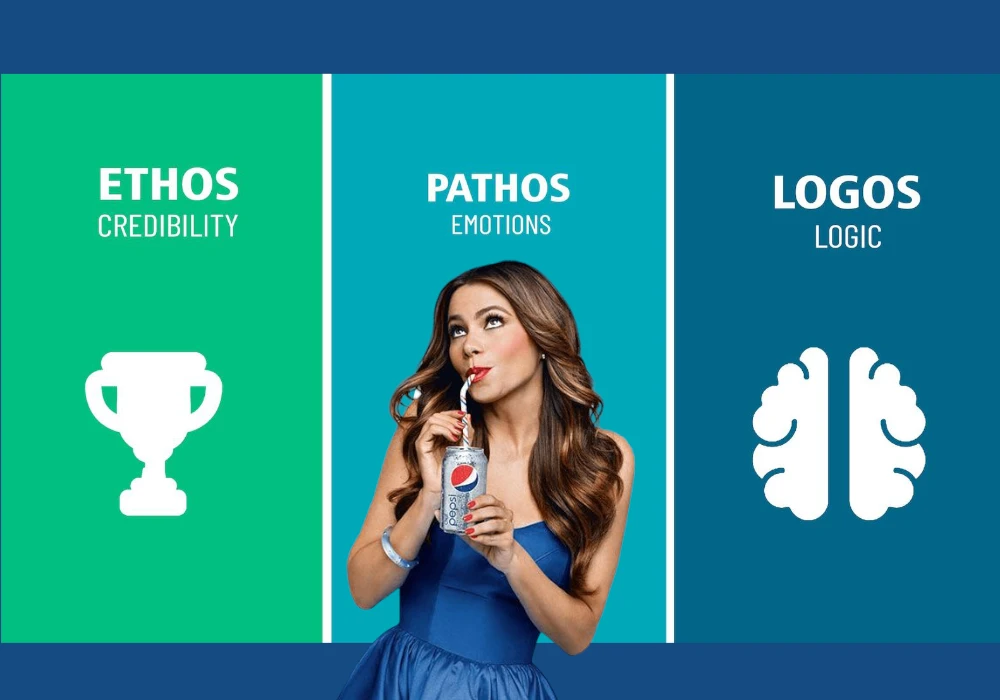The Invisible Hand of Influence: How Others Shape Our Decisions
This listicle explores six compelling informational social influence examples, demonstrating how others’ actions subtly guide our choices. Understand this principle to improve your marketing, user experience, and conversion optimization strategies. From classic psychology experiments to everyday consumer behavior, these examples reveal how and why we conform to perceived social norms, especially in uncertain situations. Discover the power of informational social influence and learn how to apply these insights.
1. Asch Conformity Experiments
A prime example of informational social influence is demonstrated by Solomon Asch’s conformity experiments. These experiments reveal the surprising extent to which individuals will conform to majority opinions, even when the majority is objectively wrong. Participants were presented with a simple visual perception task: matching the length of a given line to one of three comparison lines. The correct answer was glaringly obvious. However, the experiment introduced a twist. Confederates, posing as fellow participants, unanimously gave incorrect answers. This created a scenario where the real participants faced a conflict: trust their own judgment or conform to the group’s consensus.

The infographic below visualizes key data from the Asch Conformity Experiments, showcasing the surprising rates of conformity.

As the infographic highlights, a staggering 37% of participants conformed to the obviously wrong answers, demonstrating the potent influence of group consensus on individual judgment. Even though the correct answer was clear, the pressure to conform was strong enough to override their own perceptions. This illustrates informational social influence as participants began to doubt their own judgment, assuming the group must have better information.
Features of the Asch Conformity Experiments:
- Line-matching visual perception task
- Confederates providing unanimous incorrect answers
- 37% conformity rate to obviously wrong answers
- Demonstration of the power of group consensus
Pros:
- Clearly demonstrates the powerful effect of group consensus
- Highly replicable experimental design
- Reveals how even objective judgments can be influenced
Cons:
- Artificial laboratory setting
- Ethical concerns about deception
- Potential underestimation of conformity in ambiguous situations
Examples of Application:
- Educational settings to illustrate conformity
- Informing jury deliberation processes
- Explaining groupthink in organizational decision-making
Tips for mitigating informational social influence:
- Be aware of how unanimous group opinions can sway your own judgment.
- Seek multiple independent sources of information before making decisions.
- Cultivate environments where dissenting opinions are valued.
The Asch Conformity Experiments deserve their place on this list because they provide a foundational understanding of informational social influence. They highlight the vulnerability of individuals to group pressure, even in situations with clear objective truths. This has significant implications for various fields, from marketing and user experience design to understanding social dynamics and decision-making processes. For digital marketing professionals, understanding this principle is crucial for crafting effective campaigns and understanding consumer behavior. By acknowledging the power of social proof and consensus, marketers can leverage these insights to build trust and influence purchasing decisions. Similarly, understanding how informational social influence can lead to groupthink is vital for business owners and entrepreneurs when making critical decisions. Fostering a culture that encourages diverse perspectives can mitigate this risk. This experiment’s findings are relevant for content creators striving to build online communities and encourage engagement, and conversion optimization specialists working to improve website effectiveness by understanding how social proof influences user behavior. For UX designers, these insights can inform the design of interfaces that leverage social validation to guide users towards desired actions.
2. Restaurant Selection Based on Crowds
One of the most common informational social influence examples is how we choose restaurants. When faced with a row of restaurants, many people gravitate towards the busiest one. This isn’t just about following the crowd; it’s a classic example of informational social influence. We assume that a packed restaurant signifies better food or service than its emptier counterparts. The crowd’s behavior acts as a signal of quality, suggesting that these diners possess information we don’t. Especially in unfamiliar locations or when we lack personal knowledge, we rely on this “wisdom of the crowds” to make our decisions, believing the collective judgment is likely better than our own.

This phenomenon occurs naturally in everyday decision-making. It’s based on the inference that popularity equates to quality, a heuristic that simplifies choices and reduces cognitive load. This dynamic creates positive feedback loops: more customers attract even more customers, amplifying the perceived popularity and desirability. For digital marketers, understanding this principle is crucial. It explains why highlighting social proof, such as the number of downloads, customers, or positive reviews, can significantly influence consumer behavior.
This approach offers several advantages. It allows for quick and efficient decision-making using readily available social information. This often leads to satisfactory outcomes with minimal effort, especially beneficial in unfamiliar situations. Imagine being a tourist in a new city. Choosing a crowded restaurant is a simple way to avoid a culinary disaster.
However, there are downsides. Information cascades can occur where early, potentially random, fluctuations in popularity lead to suboptimal outcomes. A restaurant might become popular due to a single influencer’s post, not necessarily the quality of the food. This can also perpetuate the popularity of mediocre options, limiting the discovery of hidden gems. For businesses, this highlights the importance of not solely relying on popularity metrics but also focusing on genuine quality and customer satisfaction. Finally, this herd mentality reduces the diversity of experiences, as everyone gravitates towards the same limited options.
Examples abound, from bustling tourist districts where certain restaurants are perpetually packed while others struggle, to food truck gatherings where long lines form at some vendors while others remain deserted. Restaurant booking apps further fuel this phenomenon by highlighting “popular” or “trending” venues.
So, how can you leverage this understanding while avoiding the pitfalls? Consider these tips: Look beyond crowd size and seek out other evidence of quality, such as online reviews or menu analysis. Factor in timing. A crowded lunch spot might simply be conveniently located, not necessarily superior. Be adventurous and willing to try less crowded establishments, especially those with positive reviews. You might discover a hidden treasure.
This concept of social influence in restaurant selection has been popularized by Robert Cialdini in his book Influence. Online platforms like Yelp, which highlight popular establishments, and travel guides mentioning “locals’ favorites” further reinforce this principle. By understanding the mechanisms and implications of informational social influence, marketers can better design campaigns, create compelling social proof, and ultimately influence consumer behavior.
3. Emergency Situation Bystander Reactions: A Powerful Example of Informational Social Influence
Emergency situations often present ambiguous and rapidly evolving circumstances. In these high-stakes moments, individuals experiencing informational social influence example often rely on the reactions of those around them to gauge the appropriate response. This is a classic informational social influence example, where people use social cues to define reality and determine the best course of action. This reliance on others can be incredibly powerful, sometimes leading to positive outcomes, but also carrying the potential for tragic consequences.
This phenomenon works by leveraging our inherent tendency to conform to group norms, especially in uncertain situations. When faced with an ambiguous emergency, we instinctively look to others for guidance. If those around us appear calm and unconcerned, we may interpret the situation as non-threatening, even if our instincts tell us otherwise. Conversely, if others react with alarm, we’re more likely to perceive the situation as dangerous and respond accordingly.
Examples of Informational Social Influence in Emergencies:
- The Bystander Effect: The tragic 1964 murder of Kitty Genovese is often cited as a prime example of this phenomenon. Numerous witnesses reportedly heard or saw the attack, yet few intervened, likely because they observed others’ inaction and interpreted the situation as less serious than it was. This highlights how informational social influence can lead to a diffusion of responsibility, where everyone assumes someone else will take action.
- Smoke-Filled Room Experiment: Latané and Darley’s classic experiment demonstrated this effect in a controlled environment. Participants were placed in a room that began to fill with smoke. When alone, participants quickly reported the smoke. However, when in a group with confederates who remained passive, participants were significantly less likely to report the smoke, demonstrating the power of social influence on perception and action.
- Delayed Evacuations: During building fires or other emergencies, individuals often delay evacuation if they see others remaining calm. This highlights the danger of informational social influence in situations requiring immediate action.
Pros and Cons:
Pros:
- Prevents Overreactions: In some cases, relying on social cues can prevent overreactions to non-emergency situations.
- Conserves Mental Resources: Utilizing collective assessment can be efficient in less critical situations.
- Leverages Expertise: If someone with genuine knowledge is present, their reaction can guide others effectively.
Cons:
- Failure to Intervene: The most significant drawback is the potential for tragic failures to intervene in genuine emergencies due to the bystander effect.
- Diffusion of Responsibility: Informational influence can create a dangerous sense of shared responsibility, leading to inaction.
- Delayed Response Times: In time-critical emergencies, observing others’ inaction can delay critical response times.
Tips for Navigating Emergency Situations:
- Be Aware of Social Influence: Recognize that others may be looking to you for cues, and your actions can influence their responses.
- Address Individuals Directly: In emergencies, address specific individuals for help rather than making general requests. This can break the diffusion of responsibility.
- Trust Your Instincts: If you sense danger, even if others seem unconcerned, act on your instincts. You might be the only one with accurate information.
- Take a Leadership Role: Be the first to act in potential emergencies. Your decisive action can inspire others to follow suit.
This informational social influence example deserves its place on this list because it highlights the profound impact social context can have on our behavior, particularly in high-stakes situations. Understanding this phenomenon is crucial for anyone interested in human behavior, social dynamics, and effective emergency response strategies. This knowledge can empower individuals to act decisively and potentially save lives in critical moments. The research of Bibb Latané and John Darley, widely published in psychology textbooks and incorporated into safety training programs, has been instrumental in bringing awareness to this critical aspect of social influence.
4. Fashion and Trend Adoption
Fashion and trend adoption offers a compelling informational social influence example. This phenomenon showcases how individuals rely on others for cues about desirable styles, demonstrating the power of perceived expertise in shaping consumer behavior. People adopt trends not necessarily because of social pressure (normative influence), but because they believe others—often trendsetters, celebrities, or peer groups—possess superior knowledge about what is aesthetically pleasing, high-quality, or socially relevant. This reliance on others as information sources forms the crux of informational social influence.

This process resembles the diffusion of innovations through social networks. Trends often originate with high-status individuals or groups (innovators and early adopters) before spreading to the early majority, late majority, and finally the laggards. This adoption cycle, combined with both informational and normative social influence, contributes to widespread cultural change and drives the fashion industry. For instance, the rapid spread of skinny jeans in the 2000s, the normalization of athleisure wear in non-athletic contexts, and the explosion of TikTok-driven fashion trends all exemplify this powerful dynamic. These trends demonstrate how quickly styles can disseminate globally, influenced by informational social influence.
Why is this a noteworthy example of informational social influence? It reveals how even seemingly personal choices like clothing preferences are significantly impacted by the perceived knowledge and expertise of others. This understanding can be leveraged in various fields, from marketing and advertising to social engineering and public health campaigns.
Pros:
- Helps individuals navigate complex social signals efficiently: Fashion trends offer a shortcut for understanding what is currently considered stylish, saving individuals time and cognitive effort.
- Reduces decision fatigue: By providing clear guidelines for acceptable attire, trends simplify clothing choices and alleviate the burden of decision-making.
- Creates shared cultural references and experiences: Shared fashion trends foster a sense of belonging and contribute to collective identity.
Cons:
- Can lead to unnecessary consumption and waste: The constant pursuit of the latest trends encourages frequent purchases, contributing to textile waste and environmental concerns.
- May involve abandoning perfectly good items to stay current: Informational social influence can lead to discarding functional items simply because they are no longer considered fashionable.
- Sometimes promotes styles that aren’t practical or comfortable: The desire to conform to trends can outweigh considerations of practicality and comfort.
Tips for Navigating Fashion Trends:
- Distinguish between trends you genuinely appreciate versus those you follow just because others do: Develop a personal style that reflects your individual preferences.
- Consider the longevity and versatility of trend-driven purchases: Prioritize items that can be incorporated into your existing wardrobe and worn for multiple seasons.
- Look to diverse sources for style inspiration rather than single influencers: Broaden your horizons by exploring various fashion publications, designers, and subcultures.
This example of informational social influence is popularized by diverse figures and platforms, ranging from influential fashion magazines and editors like Anna Wintour, to celebrity influencers like the Kardashians, and social media platforms like Instagram and TikTok. Even Malcolm Gladwell’s concept of ‘The Tipping Point’ elucidates how trends reach critical mass and spread rapidly through social networks, further illustrating the power of informational social influence in shaping cultural norms.
5. Online Review Influence on Consumer Decisions
Online reviews represent a powerful example of informational social influence in the digital age, profoundly impacting consumer behavior and purchasing decisions. This phenomenon leverages the human tendency to seek guidance from others, particularly when faced with uncertainty. When deciding on a product or service, especially online where direct examination isn’t always possible, consumers often turn to the collective wisdom of the crowd as a valuable source of information. This makes online reviews a crucial aspect of modern marketing and a prime example of informational social influence.
How it Works:
This form of informational social influence operates on the premise that aggregated opinions offer a reliable indicator of quality. Potential buyers assume that the experiences of others, reflected in reviews, accurately represent the likely outcome of their own purchase. This is particularly true when personal pre-purchase evaluation is difficult, such as with online shopping or service bookings. The sheer volume of readily available online reviews empowers consumers with information, allowing them to make more informed decisions.
Features that Drive Influence:
- Quantified Social Proof: Star ratings and review counts provide an immediate, easily digestible summary of overall sentiment, acting as a powerful form of social proof.
- Detailed Narratives: Individual reviews offer qualitative insights into specific product features, benefits, and potential drawbacks, often going beyond the information provided by the seller.
- Verification Systems: “Verified purchase” badges and similar mechanisms enhance credibility by confirming that the reviewer has actually used the product or service.
- Review Filtering Algorithms: Platforms often employ algorithms to highlight “helpful” or “most relevant” reviews, tailoring the information presented to the user’s context.
Pros:
- Extensive Consumer Insights: Access to the experiences of hundreds or thousands of previous consumers provides a broader perspective than traditional advertising.
- Unbiased Information (Ideally): Reviews can reveal potential issues or unexpected benefits not highlighted in official product descriptions, contributing to a more balanced view.
- Reduced Information Asymmetry: Reviews level the playing field between sellers and buyers, empowering consumers with more knowledge before making a purchase.
- Real-World Use Cases: Reviews often highlight real-world applications and scenarios not anticipated by manufacturers, providing valuable insights for potential buyers.
Cons:
- Susceptibility to Manipulation: Fake or incentivized reviews can distort the overall picture of a product or service, misleading consumers.
- Selection Bias: Individuals with extreme experiences (either very positive or very negative) are more likely to leave reviews, potentially skewing the overall representation.
- Lack of Contextual Relevance: Reviews may not accurately reflect the experiences of users with similar needs and expectations as the prospective buyer.
- Review Bombing: Coordinated negative reviews can unfairly damage a product or business’s reputation, representing a significant risk.
Examples of Successful Implementation:
- Amazon’s product rating system: A cornerstone of e-commerce, influencing purchase decisions for millions of products daily.
- Yelp’s influence on restaurant choices: A dominant force in urban areas, guiding diners towards preferred establishments.
- TripAdvisor’s impact on travel planning: A key resource for hotel bookings, tourist activities, and destination selection.
- App store ratings and download frequency: A primary factor influencing app discovery and download decisions.
Tips for Leveraging Online Reviews:
- Analyze Distribution: Pay attention to the distribution of ratings, not just the average. A high average with a wide spread might indicate polarized opinions.
- Read Diverse Reviews: Examine both positive and negative reviews to gain a comprehensive understanding of the product’s limitations and strengths.
- Consider Reviewer Context: Reflect on the reviewer’s context (needs, preferences, background) and how it compares to your own.
- Be Wary of Extremes: Approach products with too few reviews or suspiciously uniformly positive reviews with caution.
Popularized By:
Pioneers like Amazon, Yelp, and Google, along with the rise of social media influencers providing detailed product reviews, have cemented online reviews as a crucial element of modern consumer behavior. This exemplifies how informational social influence, previously reliant on word-of-mouth, has evolved in the digital landscape. For digital marketing professionals, understanding and leveraging this phenomenon is essential for success. This approach is particularly valuable when launching new products, building brand trust, and optimizing conversion rates. By understanding how consumers utilize online reviews as an informational shortcut, businesses can better tailor their marketing strategies and build stronger relationships with their target audience.
6. Laugh Tracks and Audience Reactions: How Canned Laughter Shapes Our Humor
Laugh tracks and audience reactions are prime examples of informational social influence in action. This tactic leverages our tendency to look to others for cues on how to react, especially in ambiguous situations. It demonstrates how social proof, even artificial social proof, can significantly impact our interpretation of content, particularly in the realm of comedy and emotional responses. This makes it a crucial concept for content creators and marketers to understand.
This method works by providing pre-recorded or enhanced audio cues of laughter and other reactions at strategic points within media. Primarily used in comedic content, laugh tracks signal to the viewer when something is intended to be funny. By creating a simulated group experience, even for isolated viewers, these cues subtly guide our emotional responses and interpretations. Essentially, we perceive content as funnier simply because we hear others laughing, demonstrating informational social influence example.
Several key features contribute to the effectiveness of laugh tracks and audience reactions:
- Artificial or enhanced audio cues: These can range from simple laugh tracks to more complex mixes of applause, gasps, and other reactions.
- Strategic placement: Cues are carefully placed at punchlines or moments intended to evoke emotional responses, maximizing their impact.
- Simulated group experience: This creates a sense of shared enjoyment and belonging, even for viewers watching alone.
- Subtle guidance: The cues subtly influence how we interpret the content, shaping our understanding of humor and emotional impact.
Examples of successful implementation:
- Classic sitcoms: Shows like Friends and The Big Bang Theory heavily utilized laugh tracks, solidifying their association with traditional sitcom humor.
- Live studio audiences: Talk shows often use live audience reactions to enhance the energy and excitement of the show, providing real-time social proof.
- Reality TV reaction shots: Carefully chosen reaction shots of participants guide viewers’ interpretations of events and heighten dramatic tension.
- Modern equivalents in social media: TikTok reaction videos and YouTube commentary offer contemporary examples of how creators leverage audience reactions to influence engagement.
Pros:
- Can enhance enjoyment of comedic content through social facilitation.
- Helps clarify intentions in comedy that might otherwise be ambiguous.
- Creates a sense of shared experience even when watching alone.
- Can help international audiences identify comedic moments that might be culturally unfamiliar.
Cons:
- May make poor-quality jokes seem funnier than they are.
- Often perceived as manipulative or artificial by aware viewers.
- Less necessary or effective in contemporary media.
- Can distract from content if poorly implemented.
Tips for content creators and consumers:
- Be conscious of influence: Be aware of how artificial audience reactions may be influencing your own perceptions.
- Gauge genuine humor: Try watching comedy without sound cues to evaluate the humor’s inherent value.
- Observe cultural differences: Notice how different cultures and generations respond differently to laugh tracks and other cues.
- Analyze modern usage: Consider how modern media utilizes visual reaction cues, such as emojis and comments, rather than relying solely on auditory cues.
Pioneers of laugh tracks and audience reaction manipulation:
- Charley Douglass (inventor of the “Laff Box”)
- CBS television network (pioneered their use in the 1950s)
- Sitcom and Reality TV producers who standardized and refined these techniques.
Understanding the power of informational social influence, as demonstrated by the use of laugh tracks and audience reactions, allows marketers and content creators to strategically utilize or avoid these tactics. By being mindful of how these cues shape perception, we can create more authentic and engaging content and become more discerning consumers of media.
Informational Social Influence: 6 Example Comparison
| Example | Implementation Complexity 🔄 | Resource Requirements ⚡ | Expected Outcomes 📊 | Ideal Use Cases 💡 | Key Advantages ⭐ |
|---|---|---|---|---|---|
| Asch Conformity Experiments | Moderate – Controlled lab setup with confederates | Requires actors, controlled environment | Demonstrates conformity under clear conditions | Educational demos, social psychology research | Clear evidence of group influence, replicable |
| Restaurant Selection Based on Crowds | Low – Observational, natural behavior | Minimal – naturally occurring | Quick decision-making using crowd cues | Everyday consumer choices, tourism, dining | Efficient heuristic for quality inference |
| Emergency Situation Bystander Reactions | High – ambiguous, real-time observation | Potentially none, depends on study context | Highlights bystander effect and diffusion of responsibility | Emergency training, public safety awareness | Reveals social cue reliance in urgent scenarios |
| Fashion and Trend Adoption | Moderate – tracking social diffusion patterns | Media, social networks, influencers | Shows how trends spread and are adopted | Marketing, cultural analysis, consumer behavior | Helps understand cultural shifts and consumer habits |
| Online Review Influence on Consumer Decisions | Moderate – depends on platform and data analysis | Online platforms, user-generated content | Influences purchase decisions via aggregated ratings | E-commerce, service selection, digital marketing | Access to broad social proof, reduces info asymmetry |
| Laugh Tracks and Audience Reactions | Low – audio/video editing, cue placement | Media production resources | Enhances perceived humor/emotional impact | TV sitcoms, comedy shows, media content | Increases enjoyment, clarifies comedic intent |
Navigating the Influence of the Crowd
From classic studies like the Asch Conformity Experiments to the everyday impact of online reviews, the examples explored in this article highlight the pervasive power of informational social influence. We’ve seen how crowds sway restaurant choices, how bystander reactions shape responses in emergencies, how trends ignite and spread, and even how laugh tracks manipulate our perception of humor. These informational social influence examples underscore how susceptible we are to the perceived wisdom of the group, often looking to others for guidance when faced with uncertainty. Understanding these dynamics is crucial for making sound judgments and avoiding the pitfalls of blind conformity.
The key takeaway is this: awareness is power. By recognizing informational social influence at play, we can become more conscious consumers, astute marketers, and ultimately, more confident decision-makers. Mastering these concepts allows us to analyze why people follow certain trends, make specific purchases, or adopt particular behaviors. This understanding is invaluable for anyone in marketing, business, or even just navigating daily life, enabling us to make informed choices rather than simply following the crowd. It empowers us to critically evaluate information, resist manipulative tactics, and forge our own paths.
Want to harness the power of social proof and understand how it influences your customers? Notifyio provides tools and insights to leverage informational social influence examples, helping you optimize your marketing strategies and guide consumer behavior. Explore how Notifyio can help you build trust and drive conversions by visiting Notifyio today.
























Leave a Reply